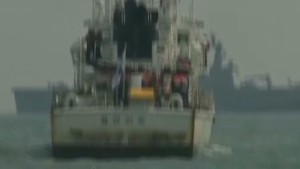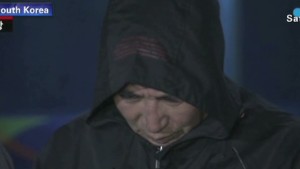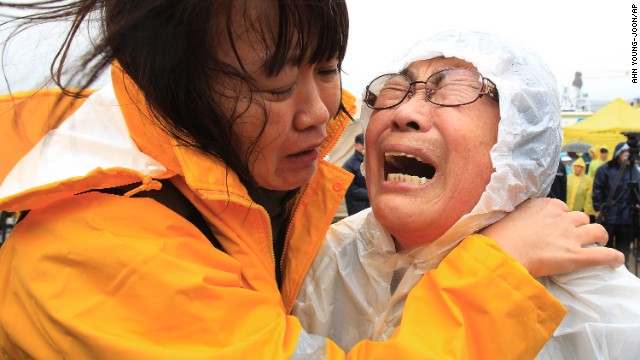Murky waters cloud the horror facing ferry rescue divers
April 20, 2014 -- Updated 1539 GMT (2339 HKT)
STORY HIGHLIGHTS
- Divers at the site of the sunken ferry face challenging conditions
- More than 120 vessels are at the site
- Weather and poor visibility hamper search and rescue efforts
Jindo, South Korea (CNN) -- Two large inflatables mark the spot where the Sewol ferry sank on Wednesday, taking with it hundreds of passengers.
Without these markers, there would be nothing to indicate the horror that lies beneath these waves. Peering into the murky waters of the Yellow Sea from aboard a local fishing boat, visibility is almost non-existent.
Under the water, conditions for divers carrying out the grim task of looking for survivors, but finding bodies instead, are challenging at best.
The boat we are traveling on floats just 100 meters from the sunken ferry -- one of more than 120 vessels I can see near the wreck site.



These range from imposing South Korean and U.S. warships to small private vessels -- all making themselves available and offering whatever help they can in the, desperate hope there may still be life beneath these waves.
This is the assumption search and rescue officials are working on.
Floating nearby, however, is a reminder that some time soon this operation will change from search and rescue to simply recovery.
Four massive cranes stand by to move the sunken ferry.
Some divers say the cranes are necessary to bring the vessel closer to the surface, allowing easier access for dive teams.
The decision to employ the cranes is not just a practical one. It is an emotional one that officials say will be made with the consent of families.
Moving the ship could be an implicit acceptance all life still onboard has been lost -- that no more survivors trapped in the ship will be found.
Despite the sheer volume of vessels, it does not look like an urgent rescue operation on the surface. It is under the water that the crucial work is happening.
A dozen speedboats filled with divers and their teams circled around the center of the site mid morning, as the sea was calm and visibility, at least above the water, was good.
Less than two hours later, the weather had turned and the diving teams disappeared.
A significant swell and strong currents forced the fishing vessel we were traveling on back to shore.
Many of the smaller vessels sought respite in calmer waters near one of the surrounding islands.
Hundreds of divers, both navy and civilian, continue to work around the clock to find passengers and to give heartbroken families an answer.
The immense manpower of this rescue operation remains at the cruel mercy of the recently fast changing weather in the Yellow Sea.
Families protest over rescue operation
 Relatives of a passenger cry at a port in Jindo on April 17 as they wait for news on the rescue operation.
Relatives of a passenger cry at a port in Jindo on April 17 as they wait for news on the rescue operation.
No comments:
Post a Comment